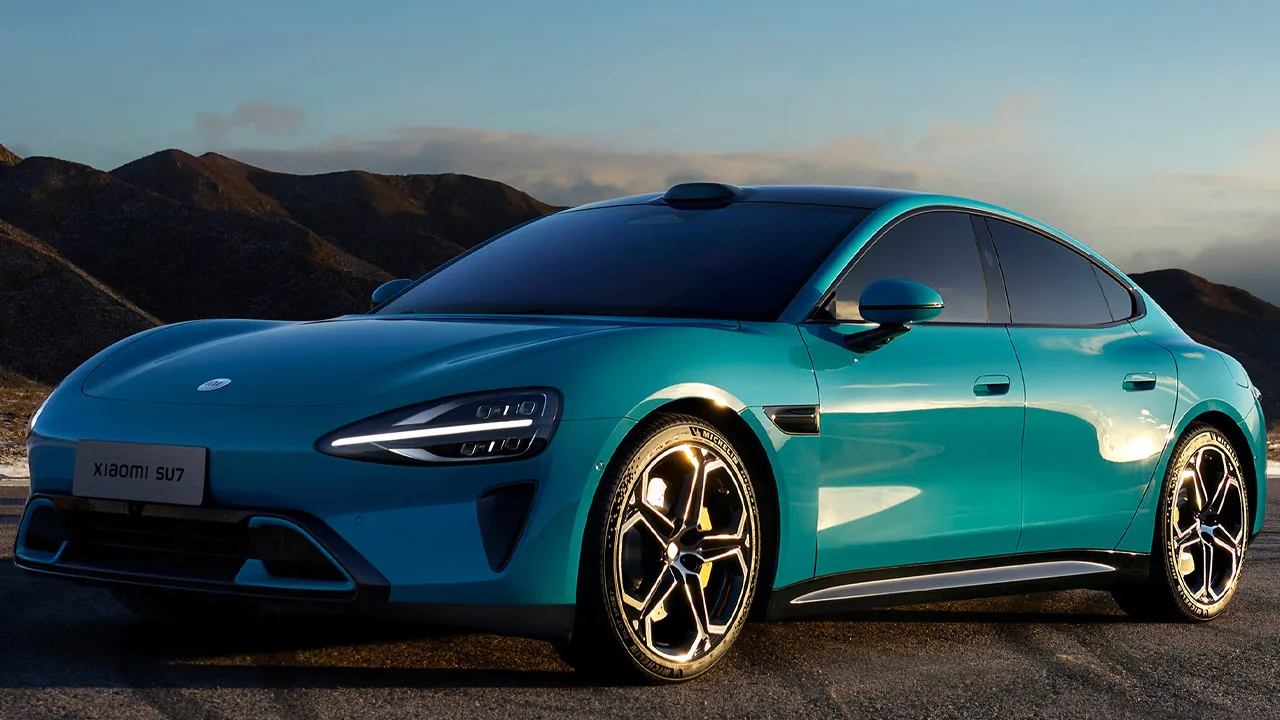Xiaomi, the Chinese tech giant synonymous with smartphones and smart home devices, has made a daring leap into the world of electric vehicles (EVs) with the unveiling of its first car, the Xiaomi SU7. This move signifies a paradigm shift, not just for the company, but for the automotive industry as a whole. Let’s explore the key aspects of the Xiaomi car and its potential impact.
Design and Performance:
The SU7 boasts a sleek, aerodynamic design with LED headlights and connected taillights, reminiscent of high-end sedans. It comes in two variants: the SU7 and the SU7 Max. The standard version offers a respectable 536 horsepower, while the Max pushes it to a thrilling 673 horsepower. Both variants offer rear-wheel and all-wheel drive options, catering to diverse driving preferences. Xiaomi emphasizes the car’s performance capabilities, claiming it has broken lap time records at racing circuits.
Tech-Centric Interior:
Stepping inside the SU7 is like entering a tech haven. The minimalist interior features a 3-spoke steering wheel and a plethora of digital screens. A massive 16.1-inch touchscreen dominates the center console, while a 56-inch heads-up display projects information onto the windshield. This emphasis on technology is evident in the Xiaomi Smart Cabin platform, which offers seamless integration with smartphones and promises a user-friendly, tablet-like experience.
Focus on Innovation and Safety:
Xiaomi hasn’t just focused on aesthetics and performance. The SU7 comes equipped with advanced driver-assistance systems (ADAS) like adaptive cruise control, automatic emergency braking, and lane departure warning. The company is also prioritizing safety, investing heavily in research and development to ensure the SU7 meets rigorous safety standards.
Impact and Potential Challenges:
The Xiaomi car marks a significant entry into the EV market, potentially shaking up the established players. With its focus on technology, affordability, and performance, the SU7 could appeal to a broad audience, especially tech-savvy consumers looking for a connected and smart driving experience. However, Xiaomi faces several challenges. As a newcomer, it lacks the brand recognition and established dealer network of traditional carmakers. Additionally, navigating the complex supply chain and manufacturing processes poses a significant hurdle.
The Road Ahead:
The Xiaomi car represents a bold, disruptive move with the potential to redefine the EV landscape. Its success will depend on its ability to deliver on its promises of cutting-edge technology, competitive pricing, and reliable performance. If it can overcome the challenges, the Xiaomi car could pave the way for more tech companies to enter the automotive space, ultimately leading to a more innovative and exciting future for electric vehicles.
Additional Notes:
It’s important to remember that the SU7 is currently only available in China, with no confirmed international launch date yet.
The starting price for the SU7 in China is approximately $34,000 USD, making it a relatively affordable option compared to other high-performance EVs.
While the 500-word limit prohibits further details, we could mention Xiaomi’s ambitious plans for future car models and its potential partnerships with other tech companies.




